Whether its wet paint, wet carpets or basically anything wet, the process of waiting for it to dry can be a painful affair. It doesn’t matter if you are using it at home or if it’s part of your job, anything that could speed up the process would surely be an added advantage. Thankfully, with technology and advanced motor power, we now have air movers, which really achieve just that.
Unlike your ordinary fan, air movers work by providing a constant blast of air that you can direct on a specific spot. They offer higher air pressure and output than an ordinary fan and come with speed settings and different operating angles too. For this reason, you can use them for a variety of tasks, including drying wet surfaces, improving the airflow in a stuffy room and cool machines. They come in small sizes for easy portability such that they can be used in places where a fan wouldn’t fit.
A good air mover should have all these convenient features to adequately perform their intended task. To help you find the one such air mover, we’ve done our research and listed the best air movers and blowers in the market below.
Top 5 Air Movers And Blowers Of 2020 Reviewed
1. Shop-Vac 1032000 Mighty Mini Air Mover
 Best Air Mover Carpet Dryer
Best Air Mover Carpet Dryer
This mini air mover from Shop-Vac gets our vote for household use. It produces 500 CFM, three-speed settings, 3 operating positions, and is daisy-chain capable. This unit is stackable, making storage a breeze. The three operating positions give you versatility rolled in one small package. Whether it’s wet carpet, walls, or closets, the Shop-Vac 1032000 Mighty Mini Air Mover can do it.
What we don’t like is the 10-foot cord which can limit its use but we do like that there’s an onboard cord wrap to make packing it away easy. This air mover is lightweight at just 11.2 pounds. And it’s pretty quiet to boot. However, it’s not ideal for exhausting fumes from the air because it only has 500 CFM. Also, it isn’t built for heavy use. Some users have reported the unit breaking down after a year of extensive use.
Pros:
- Compact
- Versatile
- Affordable
Cons:
- Only 500 CFM
- May break down a year after purchase
2. B-Air VP-25
This is another compact air mover that allows you to dry out hard-to-reach areas such as crawl spaces and cabinets. This air mover features a ¼ HP motor, 3-speed settings, a low 2.1 amp draw (highest speed setting), and built-in power outlets for daisy chaining. It also has an interlock mechanism so you can stack it safely and securely with 4 other units.
Other features include a 10-foot cord, 3 angle drying positions, and rubber feet that will not skid or mark your floors. With 900 CFM, you can easily dry cramped areas and tight spaces inside the home or at a job site. We also love the fact that this comes with a 5-year housing warranty so you can be sure it can withstand abuse. One thing to note is that the cord could have been longer. Also, they can be noisy.
Pros:
- 5-year housing warranty
- 900 CFM
- Lightweight and compact
Cons:
- Slightly noisy
- Power cord could have been longer
- Not for drying walls or exhausting fumes in large areas
3. CFM Pro
 Best Air Mover For Garage
Best Air Mover For Garage
The CFM Pro is a centrifugal air mover that features a ⅓ HP motor, 3-speed settings, and 2 GCFI outlets to enable you to daisy-chain units. The unit also comes with 3 blowing positions – horizontally, at a 45-degree angle, and at a 90-degree angle – which gives versatility to the machine. You can redirect the airflow to where you need it – drying furniture, exhausting fumes, etc. The cord is 25 feet long which you can wrap around the handle when storing.
And it has four non-marring, anti-skid feet as well as a body made from a super-durable, polyethylene composite. The unit is stated to produce 3300 CFM. While it doesn’t feel like 3300 CFM, the unit does get the job done, including drying out flooded basements. However, the warranty is only is only for 60 days. And it is a bit noisy. Also, it pulls a lot of electricity when setting at the highest speed which can blow circuits.
Pros:
- Extra long cord
- Variable speed and position
- Stackable
Cons:
- Doesn’t feel like 3300 CFM but still powerful
- Noisy
- 60-day warranty
- High amp draw
4. XPOWER P-230AT
The XPOWER P-230AT is another mini air mover that’s perfect for home use. It has an output of 800 CFM. It features a ⅕ HP motor, built-in dual outlets, a 3-hour timer, and 3-speed settings. You can position the unit in 4 different angles. Along with its compact design, you’ll easily be able to use this unit to dry hard-to-reach areas and tight spaces such as under counters and inside cabinets.
The low amp draw (2.3 amps) ensures you can easily daisy chain 5 units on a 15 amp breaker if needed. However, the manufacturer no longer sells replacement speed switches which you might need if yours burn out as some customers have experienced. Also, the motor requires some “breaking in” which causes it to release a burning plastic smell when initially used. It does go away over time.
Pros:
- Powerful airflow
- Low amp draw
- 4-angle drying positions
Cons:
- Some replacement parts are no longer available
- Has the initial burning plastic smell
5. Air Foxx AM4000a
 Best Commercial Air Mover
Best Commercial Air Mover
This is a heavy duty machine that features a 1 HP motor, 3 adjustable speeds, and a maximum of 4000 CFM. If you’re planning on getting an air dryer for home or restoration use, this is the one you’re looking for. This air mover has a tilting mechanism that allows you to redirect the air at 45 and 90-degree angles. The tough heavy-duty housing is impact resistant. And the air mover comes with a 25-foot heavy duty power cord and a built-in carrying handle. However, this machine has a 10.8A amp draw at maximum speed and there’s no option to daisy chain it. It can also be quite loud.
Pros:
- 4000 CFM
- Impact resistant housing
- 25-foot power cord
Cons:
- High amp draw
- Loud
- Can’t be daisy chained
How to Choose the Best Air Mover: the Ultimate Buying Guide
So, you want an air mover. Well, choosing the right one for the jobs you have in mind isn’t going to be a walk in the park. You’ll need to look over the kinds of air movers in the market, not to mention brands, specs, and special features. If you need help navigating this world of industrial blowers, we’ve got just the buying guide for you.
What is an Air Mover?
An air mover is basically a heavy-duty industrial fan that produces high-velocity airflow to promote air circulation and increased evaporation. It can be used for multiple applications, but the idea is faster drying time, improved ventilation (just like air scrubbers), and cooling.
Depending on the manufacturer and industry, an air mover is also be called industrial air blowers, commercial blower fans, and floor drying fans. Some even call them carpet dryers and paint fume extractors.
What Can an Air Mover Do?
Because an air mover increases air circulation, it can be used to dry out carpets, walls, floors, and wall cavities. In fact, an air blower can dry out a carpet within 20 minutes. It can also be used to dry paint and concrete. Some use air movers to remove fumes or gases in a workspace while others use them to cool down equipment and prevent overheating.
Types of Air Movers
There are three types of air movers on the market. Each type of blower will offer a different speed and direction of airflow.
Axial air Blowers
These are large air blowers that produce a high CFM (cubic feet per minute). It is specifically designed to blow a large amount of air at a wide space but that air can only be moved horizontally. These are perfect for drying walls or top-down drying carpets. You can also use these air movers for ventilation and cooling.
Centrifugal Air Movers
Unlike axial air blowers, these can move air in several directions. They can also draw in air from several sources and direct it towards a single spot. These fans are more compact and are often used when drying out hard-to-reach areas such as crawl spaces, closets, and cabinets. Compared to an axial air blower, a centrifugal one will have a lower CFM.
Compact
These are the most versatile of all air movers. They’re compact and only have ¼ HP motors but they can be used to dry large floor areas and perform spot treatments such as drying the area under counters, in corners, and closets. Compared to centrifugal air movers, these take up less space and make less noise.
What are the Important Features of an Air Mover that I Should Consider?
Motor Power and Speed
When choosing an air blower, you can to consider the motor that will be powering it which could range from a ¼ HP motor to 1 HP motor. First, you’ll need to think about where you’ll be using the air mover.
If you’re planning on working on a large area, then you might want to choose something that has the capacity to meet the demands of the job, possibly a 1 HP motor. If you plan on using the air mover in a residential area or an office and noise level is a consideration, you might want to stick with a ¼ HP motor. The B-Air VP-25, for example, is a compact air mover that will be able to effectively move air with minimal noise.
You may want to consider an air mover that has variable speeds like the XPOWER P-230AT which has 3 settings because it adds to the unit’s versatility. With a lower fan speed, you can operate the powerful air mover at a lower noise level and use it for small room applications.
Airflow (CFM)
CFM or cubic feet per minute is the measurement of how much air is moved by the machine in 1 minute. Keep in mind that a higher horsepower does not translate to a higher CFM. Generally, you can expect axial air movers to have a CFM rating of 3000 or more. Centrifugal air movers typically range 2400- 2700 CFM.
Amp Draw
If you plan on using several units at a time, then you need to consider amp power. Lower amp draw units work best if you’re planning on stacking or daisy chaining them. This is also ideal if there are few outlets on the job site. Axial air movers have a lower amp draw (2.5) compared to “snail” or centrifugal air movers. For example, the Air Foxx AM4000a which is a centrifugal air mover has a high amp draw.
Portability
Compact air movers are the lightest units available such as the Shop-Vac 1032000 Mighty Mini Air Mover. In comparison, axial air movers are larger and tend to be heavier. If you’re planning on using the air mover in different locations, you need to make sure that it can be easily transported. Some air movers feature wheels while others are lightweight, making it possible for one person to carry around. Also, consider how much space it will take up in your van or truck. Axial air movers will take up more space, leaving less room for the rest of your equipment.
Ease of Storage
Naturally, you can’t just leave your air mover lying around. You’ll want to make sure that it can be easily stored away, especially if you’re getting more than one. The beauty of axial air movers is the fact that they are stackable.
Because there are plenty of air movers in the market, you can be sure you’ll find what you need at the right price. Just make sure that you’re clear on what you’ll be using it for so you can make the right choice.


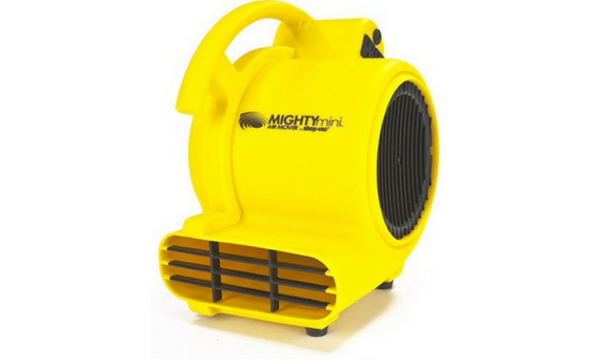
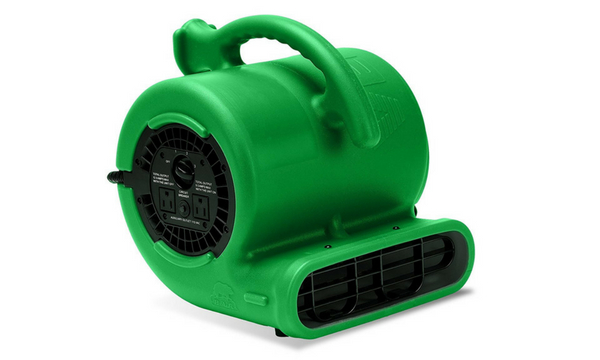
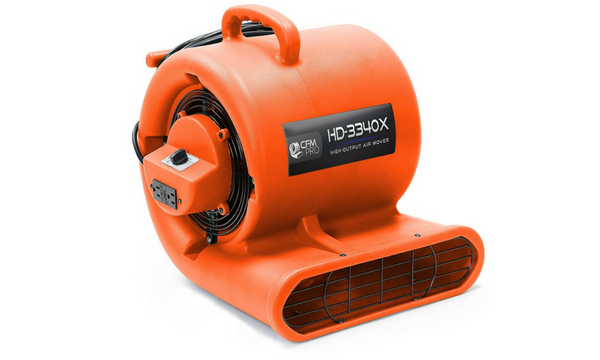
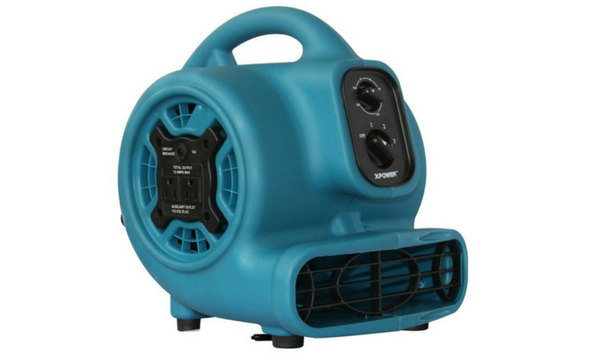
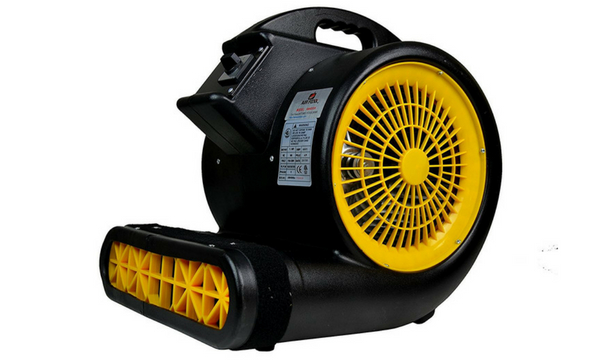
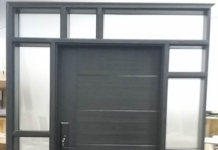










![Best Crochet Hooks for Beginners and Pros [2020 Update] best crochet books](https://www.awebtoknow.com/wp-content/uploads/2018/01/best-crochet-books-100x70.jpg)
![Best Waffle Makers For Homemade Delicious Waffles [2020 Update] best waffle makers](https://www.awebtoknow.com/wp-content/uploads/2017/08/best-waffle-makers-100x70.jpg)

